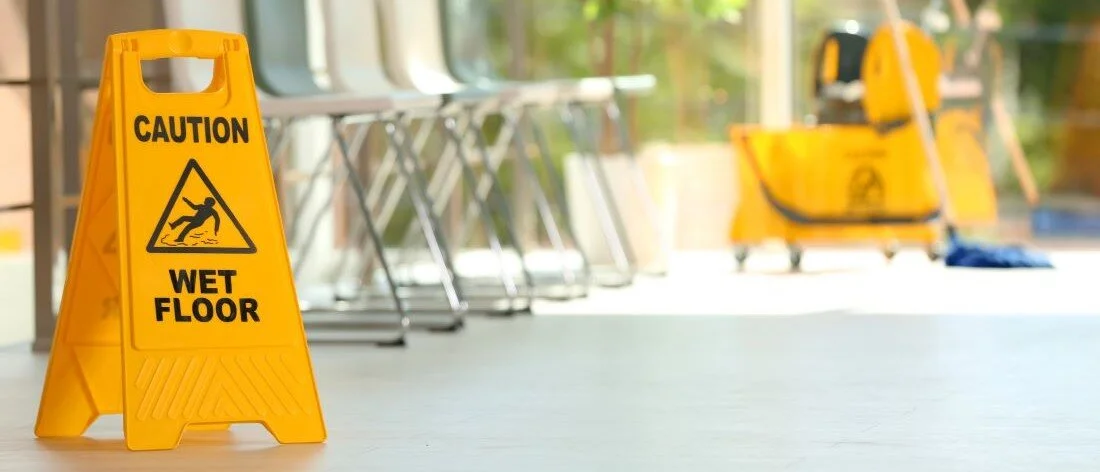
Industry News

The Road to Recovery: Commissioner Lara's Plan to Rescue Property Insurance in California
Author, Jeremy Hoolihan, Account Executive, Rancho Mesa Insurance Services, Inc.
California Governor Gavin Newsom recently declared property insurance a State of Emergency in CA based on a mass exodus of property insurance companies. This has allowed CA Insurance Commissioner Ricardo Lara to strike a deal with insurance companies to encourage new coverage in the State. The changes are slated to go into effect by the end of 2024. However, the hope is that insurers will begin to write homeowner’s policies sooner.
Author, Jeremy Hoolihan, Account Executive, Rancho Mesa Insurance Services, Inc.
California Governor Gavin Newsom recently declared property insurance a State of Emergency in CA based on a mass exodus of property insurance companies. This has allowed CA Insurance Commissioner Ricardo Lara to strike a deal with insurance companies to encourage new coverage in the State. The changes are slated to go into effect by the end of 2024. However, the hope is that insurers will begin to write homeowner’s policies sooner.
The agreement between Lara and the insurance industry will have insurers return to high-risk zones in the State, in exchange for relief in current regulations. This would allow insurers to get higher rate increases through the state regulator much faster.
Key regulatory elements of Lara’s plan, per his press conference on September 21, 2023, include:
Executive action by the Commissioner to transition homeowners and businesses from the FAIR Plan back into the normal insurance market with commitments from insurance companies to cover all parts of California by writing no less than 85% of their statewide market share in high wildfire risk communities. For example, if a company writes 20 out of 100 homes statewide, it must write 17 out of 100 homes in a distressed area.
Allowing FAIR Plan policyholders who comply with new safer wildfire regulations the first priority to transition to the normal market.
Expediting the Department’s introduction of new rules for the review of climate catastrophe models that recognize the benefits of wildfire safety and mitigation actions at the state, local, and parcel levels.
Directing the FAIR Plan to further expand commercial coverage to $20 million per building to close insurance gaps for homeowner’s associations and condo developments to help meet the State’s housing goals and to provide required coverage to other large businesses in the state.
Holding public meetings to explore incorporating California-only reinsurance costs into rate filings.
Improving rate filing procedures and timelines by enforcing the requirement for insurance companies to submit a complete rate filing, hiring additional Department staff to review rate applications and inform regulatory changes, and enacting intervener reform to increase transparency and public participation in the process.
Increasing data reporting by the FAIR Plan to the Department, Legislature, and Governor to monitor progress toward reducing its policyholders.
Ordering changes to the FAIR Plan to prevent it from going bankrupt in the case of an extraordinary catastrophic event, including building its reserves and financial safeguards.
Lara’s plan is hopefully going to deter more insurance companies from leaving California by loosening certain elements of insurance regulations. Under the existing system, insurers need to apply with the Department of Insurance to raise their rates and provide supporting documentation to justify the rate hike. The process would allow consumer advocates to intervene along the way, acting as watchdogs in the process.
With property owners desperately searching for affordable comprehensive coverage, Lara’s plan cannot come sooner. While this will take time to implement, it is an important step in restoring the property marketplace in California. If you have any questions relating to this article please feel free to reach out to me at jhoolihan@ranchomesa.com or 619-937-0174.
SafetyOne™ Mobile App Streamlines Safety Within the Janitorial Industry
Author, Jeremy Hoolihan, Account Executive, Rancho Mesa Insurance Services, Inc.
Earlier this year, Rancho Mesa launched its proprietary SafetyOne™ mobile app. Feedback so far has been extremely positive, with many clients taking full advantage of the extensive resources the app provides.
Author, Jeremy Hoolihan, Account Executive, Rancho Mesa Insurance Services, Inc.
Earlier this year, Rancho Mesa launched its proprietary SafetyOne™ mobile app. Feedback so far has been extremely positive, with many clients taking full advantage of the extensive resources the app provides.
As a specialist in the janitorial industry, I have already witnessed how much SafetyOne has improved our clients’ risk management programs. When asked how the app can improve a risk management program, we focus on efficiency and how the app will streamline all of a business’ processes.
For example, the app will help improve the lines of communication between management and crews by sending push notifications to mobile app users, such as crew leaders, with important information and reminders. The app will document incidents at your clients’ location and automatically notify the appropriate administrators in real-time.
The app also ensures that safety trainings are a priority. A company’s administrative staff will be able to determine what safety training topics will be available to each crew. Then, crews will be able to document regular safety meetings easily through their mobile device. The safety meeting documentation will be available in real-time, which helps management address who might have missed the meeting.
In addition, the app is helpful in addressing and minimizing safety issues in the field. The app allows a user to perform and document risk observations at each jobsite to find and address safety concerns before there is an incident.
And finally, one of the most talked about advantages the app provides Rancho Mesa clients is the ability to go paperless. The SafetyOne app eliminates paperwork through electronic documentation of safety meetings, risk observations and other forms. This allows the information to be accessed at any time.
If you are a Rancho Mesa client and have not yet explored the capabilities of SafetyOne, we strongly recommend you explore this new technology. With the assistance of training videos and our client services team, the implementation should be straightforward and easy.
If you have any questions relating to SafetyOne, please feel free to reach out to me at (619)937-0174 or jhoolihan@ranchomesa.com.
How Janitorial Firms Can Avoid OSHA Fines
Author, Jeremy Hoolihan, Account Executive, Rancho Mesa Insurance Services, Inc.
Avoiding government standards in the janitorial industry can be costly in the event of an unexpected OSHA visit or after a serious injury. In an industry that generally has lean profit margins, OSHA fines could be detrimental to the stability of the business. Knowing the most common OSHA violations and protecting your business from them can help insulate your organization from costly fines while also keeping your company safe. Here are five of the most common OSHA violations in the janitorial industry and strategies to avoid potential fines.
Author, Jeremy Hoolihan, Account Executive, Rancho Mesa Insurance Services, Inc.
Avoiding government standards in the janitorial industry can be costly in the event of an unexpected OSHA visit or after a serious injury. In an industry that generally has lean profit margins, OSHA fines could be detrimental to the stability of the business. Knowing the most common OSHA violations and protecting your business from them can help insulate your organization from costly fines while also keeping your company safe. Here are five of the most common OSHA violations in the janitorial industry and strategies to avoid potential fines.
Hazard Communication Standard:
A hazard communication standard requires that all cleaning businesses provide written information to their employees about hazardous chemicals used in the course of business and stored on site. The employer is required to label all chemicals with information relating to its hazard classification, and the employer must maintain safety data sheets (SDS) at each jobsite. In addition to having this information available, the employer is also responsible for training the employees on the proper handling of each chemical before they begin using it. Having a hazard communication standard in place can help you avoid an OSHA fine while also creating a safe work environment.
Proper Use of Personal Protective Equipment (PPE):
It is critical that all janitorial staff is trained on the proper use of PPE. PPE can help protect employees against harmful exposures that occur while performing their normal duties. Examples of PPE include gloves, masks, safety glasses, and back braces. Proper training on the use of PPE should be done with each employee and documented in their employee file. Supervisors should monitor the use of PPE by employees to ensure consistent use. If employees are seen not wearing the proper PPE for the task at hand, this should be addressed verbally, and in writing to minimize future injuries. Serious injuries and OSHA fines are avoidable if the proper use of PPE is taught and monitored.
Slip, Trips, and Falls:
One of the most common injuries in the janitorial industry comes from slips and falls. Some falls can result in serious injuries, workers’ compensation claims, lawsuits, and OSHA fines. The most common slip and fall hazard is from wet floors, typically while mopping. These wet floors not only pose a problem for janitors, they are also a huge concern for the general public. Common ways to avoid these types of injuries include using caution cones to alert people of the wet surfaces, closing off areas that are being cleaned, and mopping areas after hours when there is less foot traffic. Using caution cones and proper signage can warn others of wet surfaces to avoid serious injuries and OSHA fines.
Bloodborne Pathogen Standard:
For those janitorial businesses that work within a healthcare setting, it is imperative that they follow the Bloodborne Pathogen Standard. This policy establishes an easy and safe way to handle blood and other bodily fluids. If you work in a setting where blood contact is common, it is important that you have the proper training. Otherwise, it could result in an OSHA citation.
Record Keeping:
Proper record keeping is critical if and when your firm is presented with an unexpected OSHA visit. Keeping updated records such as your injury & illness protection program, safety data sheets, documented employee training, and employee handbooks can help avoid common administrative fines.
Organizing and implementing these strategies can be overwhelming for many janitorial companies that may not have the resources for full-time human resources directors and/or safety coordinators. Through the Risk Management Center, Rancho Mesa and MaintenanceOne™ offers clients the tools and programs that can proactively manage these risks and the documentation required to be prepared when OSHA knocks on your door. Reach out Jeremy Hoolihan at jhoolihan@ranchomesa.com or 619-937-0174 to learn more about how we can assist you.
Mitigate Janitorial Industry’s Employee Theft Exposure
Author, Jeremy Hoolihan, Account Executive, Rancho Mesa Insurance Services, Inc.
Employee theft can be detrimental to any business and can come in many forms. Janitorial businesses, in particular, have an inherent risk of employee theft as employees often work alone at the client’s property with little to no supervision and access to valuables. Employee theft can start with smaller items that are easily overlooked and can quickly escalate. These types of losses are not only a financial burden, but can also tarnish the business’ reputation.
Author, Jeremy Hoolihan, Account Executive, Rancho Mesa Insurance Services, Inc.
Employee theft can be detrimental to any business and can come in many forms. Janitorial businesses, in particular, have an inherent risk of employee theft as employees often work alone at the client’s property with little to no supervision and access to valuables. Employee theft can start with smaller items that are easily overlooked and can quickly escalate. These types of losses are not only a financial burden, but can also tarnish the business’ reputation.
Insurance companies typically break employee theft into two categories: 1st party and 3rd party theft or crime. When an employee steals directly from the employer, it is called 1st party crime. Examples of this include embezzlement, inventory theft, theft of supplies, and more. Third party crime occurs when an employee steals property from the employer’s client or vendor. Examples of this would include stealing property from a client’s premises such as laptops, cash, etc.
It is important to note that most insurance policies do not automatically cover employee theft. Those that extend coverage typically only offer 1st party crime via an endorsement and provide lower limits than stand-alone policies.
Janitorial companies can protect themselves from theft exposure by securing a fidelity bond or business services bond, a commercial crime policy, or through obtaining a specialty enhancement endorsement which adds 1st and 3rd party crime coverage to a package policy.
A fidelity bond protects a company if employees commit theft, fraud, or other dishonest acts. Most insurance policies exclude dishonest and malicious acts which includes employee theft.
A commercial crime policy and fidelity bond are similar in some respects, but they differ in that commercial crime insurance covers a wider range of threats, while fidelity bonds offer more targeted coverage. In addition to the offerings listed above, a commercial crime policy could cover crimes by people outside of the company, including burglary, theft, and forgery.
As mentioned, a third option is purchasing a 1st and 3rd party crime enhancement endorsement to the package policy. This is typically the most cost effective; however, these endorsements are usually only available through specialty programs specific to niche industries like janitorial and typically have limited access. Rancho Mesa’s MaintenanceOne™ Janitorial Program has access to markets that provide these specific endorsements.
To discuss these options in further detail, please reach out to me at 619-937-0174 or at jhoolihan@ranchomesa.com.
SB 93 Impacts Janitorial Companies’ Hiring Practices
Author, Jeremy Hoolihan, Account Executive, Rancho Mesa Insurance Services, Inc.
As businesses continue moving towards fully reopening, certain California employers will be faced with reemployment or recall requirements, due to Senate Bill 93 (SB 93). SB 93 was signed into law by Governor Gavin Newsom on April 16, 2021. The law requires that covered employers offer their employees who were laid-off due to the COVID-19 pandemic, available employment based on a preference system.
Author, Jeremy Hoolihan, Account Executive, Rancho Mesa Insurance Services, Inc.
As businesses continue moving towards fully reopening, certain California employers will be faced with reemployment or recall requirements, due to Senate Bill 93 (SB 93). SB 93 was signed into law by Governor Gavin Newsom on April 16, 2021. The law requires that covered employers offer their employees who were laid-off due to the COVID-19 pandemic, available employment based on a preference system.
While several industries are impacted by this new legislation, employers that provide “building services” such as janitorial, building maintenance, or security services to office, retail, or other commercial buildings also fall under the requirements of the new law.
As an expert insuring janitorial companies through our exclusive MaintenanceOne™ program, this impacts many of our clients. To understand some of the additional components of the new law, we have summarized some key points below:
Qualifying Employees
Employees that qualify for SB 93 protection must have:
Been employed by a covered employer for “6 months or more in the 12 months preceding January 1, 2020.
Been “separated from active service…due to a reason related to the COVID-19 pandemic, including a public health directive, government shutdown order, lack of business, a reduction in force, or other economic, non-disciplinary reason related to the COVID-19 pandemic.”
Worked two hours or more per week for the employer.
Requirements of the Employer
Covered employers must offer laid-off employees all job positions that become available for which the employee qualifies. Laid-off employees will be deemed qualified if the employee held the same position at the time of the lay-off.
The laid-off employee must be given five business days to respond to the offer.
In the event that more than one employee would be eligible for a position, the employer must offer the position to the employee with the longest tenure based on the date of hire.
An employer that declines to recall a laid-off employee on the grounds of lack of qualifications must provide the laid-off employee written notice within 30 days.
Record-Keeping
Covered employers must maintain the following records for at least three years starting from the date of layoff:
Employee’s full legal name
Employee’s job classification at time of layoff
Employee’s date of hire
Employee’s last known home address
Employee’s last known email
Employee’s last known telephone number
Records must also include any layoff notices and “all records of communications between the employer and the employee.”
Enforcement and Penalties
SB 93 compliance and enforcement is handled by the California Division of Labor Standards Enforcement (DLSE). The DLSE may order reinstatement, front and back pay, and benefits, as well as impose substantial penalties and liquidated damages. SB 93 takes effect immediately and expires on December 31, 2024.
The law also has a collective bargaining agreement waiver provision – any such waiver must be explicitly set forth in that agreement in clear and unambiguous terms.
No Retaliation
SB 93 prohibits employers from retaliating or taking adverse action against employees seeking to enforce their rights.
What’s Next?
Covered employers should take stock of their current situations and evaluate their options for compliance. Employers should also take extreme caution when making their employment decisions. It is an especially difficult time for both employers and employees. Employers are expected to follow the law closely and employees are desperate to find employment. If not careful, this could lead to disagreements and potential employment related lawsuits.
If you are a janitorial business trying to navigate through these turbulent times, consider our MaintenanceOne™ program which provides a full service Risk Management Program that can not only assist your business with its insurance needs such as Employment Practices Liability Insurance, but also assist with HR and compliance that can guide you through this process.
Please contact me at (619) 937-0714 or jhoolihan@ranchomesa.com for more information on MaintenanceOne™.





